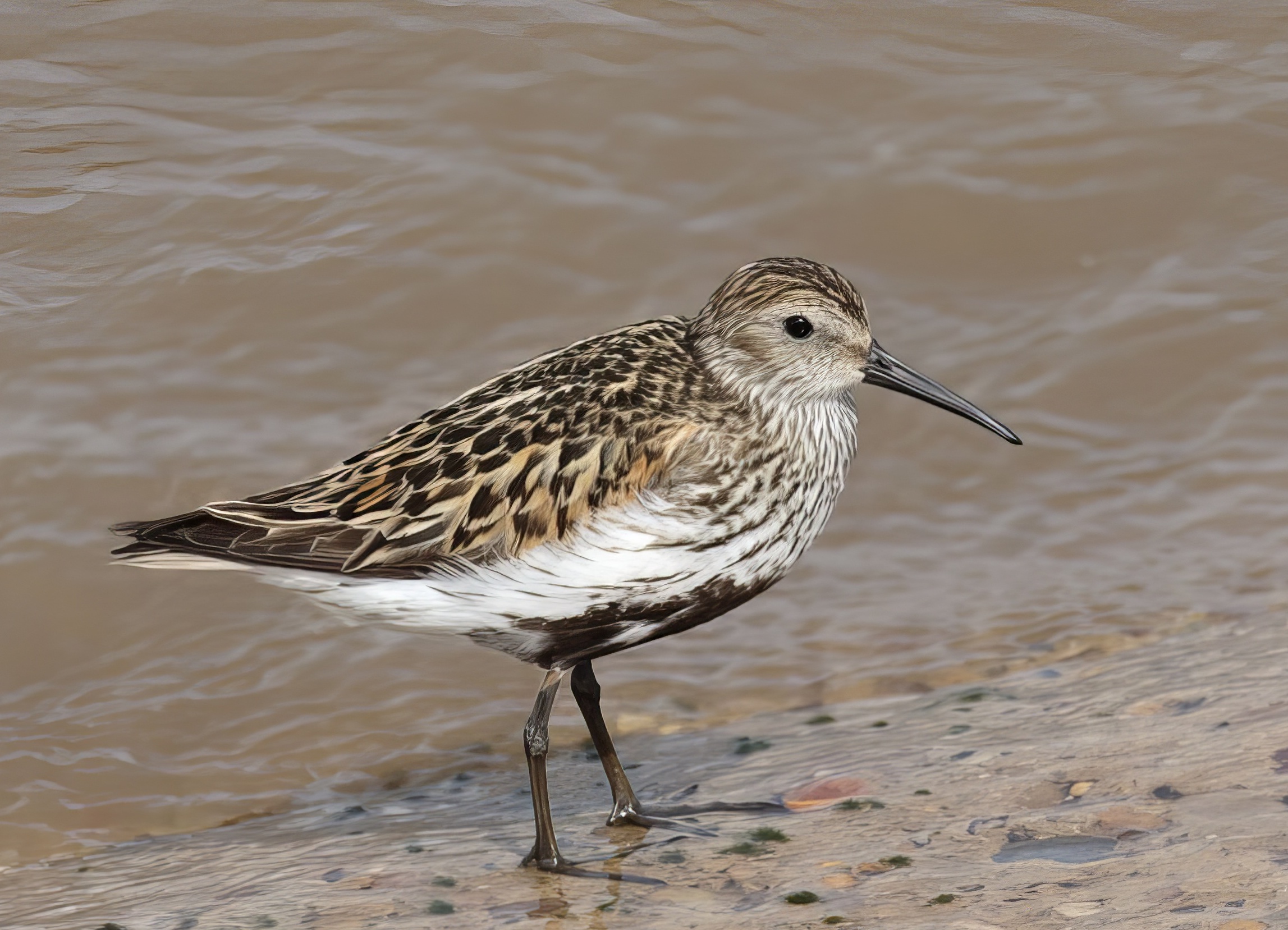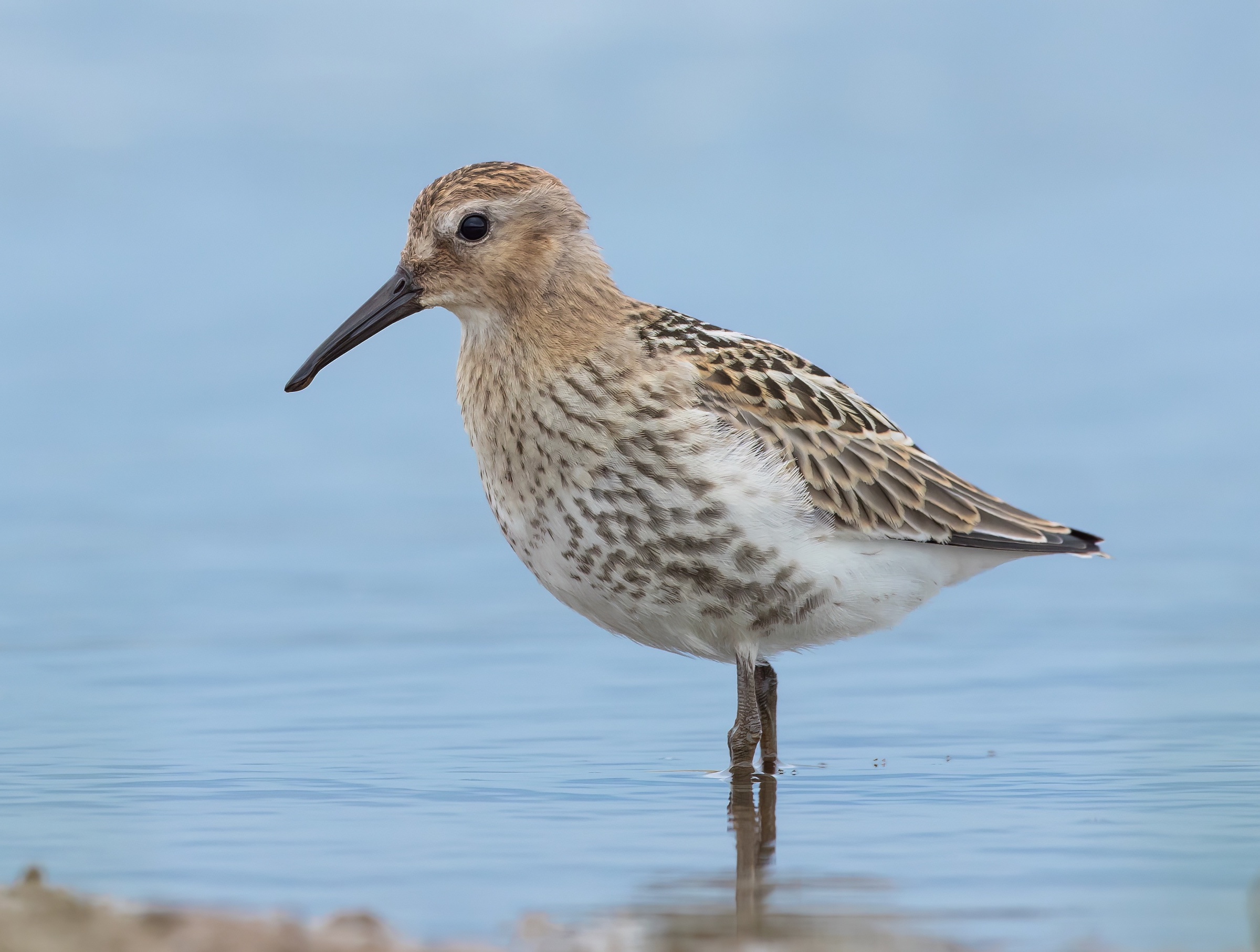Dunlin Calidris alpina
Southern form schinzii a common passage migrant; north-east Greenland form arctica a passage migrant in unknown numbers; Scandinavian/Russian form alpina a very common passage migrant and winter visitor, mainly coastal. Bred to early 20th century.


One of our commonest migrant and wintering waders it hung on as breeding species at Scotton Common until the 1890s. BoLaSH and the Atlas referred to a possible breeding record from Reads Island in 1958 which on its own is no longer considered sufficient evidence to sustain a status of irregular breeder in the 50 year period to 1989. The Atlas put the wintering population in the late 1980s at 40,000 on The Wash and 10,000 on the Humber. In the last few years the numbers reported in LBR have been slightly less than half that. The largest numbers occur on passage in July-August when small numbers can turn up at many inland sites. The biggest count in the five years to 2018 was 16,300 at Gibraltar Point in August 2018.
Currently, IOC taxonomy recognises 10 subspecies of Dunlin, with three of these passing through the county, principally on The Wash and the Humber. Subspecies schinzii are moorland breeders in Britain and Scandinavia and migrate through The Wash in August and early September, moving on to winter in west Africa. Subspecies alpina breed in northern Scandinavia and Russia and winter on The Wash - they make up the bulk of wintering birds in the county. Those which breed in Greenland (arctica) pass through The Wash in small numbers each year, also on their way to Africa. There are many recoveries and retraps of Dunlin ringed in Lincolnshire from the Scandinavian countries and Russia in both spring and autumn, as well as birds ringed in the same countries retrapped in Lincolnshire. Birds moving south in the autumn are also regularly retrapped in coastal European and African countries. A very few ringed as nestlings on their breeding grounds have come from Iceland and Greenland.
Reference
Wash Wader Ringing Group (various) at https://wwrg.org.uk/
(Account as per new Birds of Lincolnshire (2021), updated and included November 2022)
